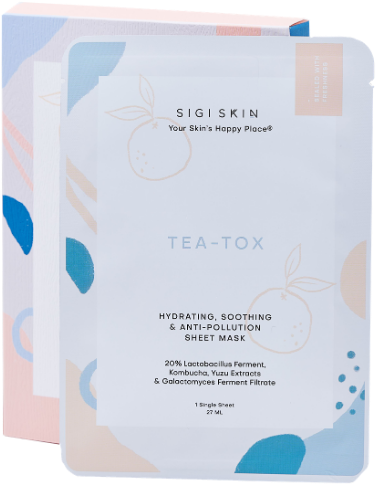Getting rid of acne marks
Acne marks vs scars
Many often confuse the 2 as they may appear to look the same. Both acne marks and scars are formed in a similar way, in which they start to be more visible when the skin’s natural healing process is disrupted and disturbed.
Acne marks are usually also known as post-inflammatory hyperpigmentation, and usually appear as red, bluish-purple or brown spots that fade away with time.
On the other hand, acne scars happen after a bout of breakouts, especially if the pimple was an angry one at that which destroys tissues under the skin, triggering formation of fibrous tissues that manifests as what we know as scarring. As the name suggests, acne scars can be difficult to remove, and do not fade away easily like marks. Acne scars are usually raised as a slight bump if there is an excessive amount of fibrous tissues produced, or a dent in the skin will be made if there is a lack of it.
Why do acne marks occur?
Acne marks are the result of popping and squeezing pimples, which disrupts the process of healing. This causes the wound to open up and when it heals over, there will be discolouration. There are also times where squeezing them can result in puncturing the tiny blood vessels on your face which results in these marks as well. The visibility of these marks vary according to your skin tone as well. With fairer skin tones, red/purple coloured marks will take a shorter time to fade as compared to brown marks on darker skin.
If you spot a pimple, leave it be and let it heal on its own.
How to treat acne marks
#1 Use a vitamin C serum
Vitamin C serums can help to fade dark spots and hyperpigmentation, as well as help to even out your skin tone faster, getting rid of these pesky marks. Additionally, it can also brighten your complexion and reduce the visibility of these dark marks caused by acne.
If you want an effective vitamin C that can combat both acne and acne marks, try Daylight Oasis! It contains a superfood ingredient, turmeric, that helps to lighten hyperpigmentation and dark spots by evening our skin discolourations. Furthermore, its antiseptic and antibacterial properties can help fight against pimples, hence preventing acne and acne marks. It also has the ability to take redness out of papules and scarring, white reducing inflammation to calm and smooth out your skin! Sebum control also kicks in with turmeric, which reduces chances of acne even further.
#2 Use a calming moisturiser
When you are having acne, the last thing you may think of to incorporate into your routine would be a moisturiser as the common misconception is that they are oily and greasy. However, your skin still needs to be hydrated to ensure a healthy skin barrier. Good news is, there are still suitable moisturisers out there for you. You are right to avoid heavy and greasy ones that make your skin more oily. Instead, opt for a gel moisturiser that can do the same job without the sticky, oily feeling.
Idyllic Fields Daytime Moisturiser is a gel type that is extremely lightweight and goes on smoothly on the skin while still being able to deeply hydrate and balance pH levels of your skin. The best thing about Idyllic Fields lies in its 71.9% oats content, which aims to effectively calm inflammation and fight against acne!
#3 Apply sunscreen
Sunscreen is always a need even when you have acne. A multi tasking one like Morning Glow Physical Sunscreen can also help prevent further development of dark spots and hyperpigmentation. Additionally, ingredients like zinc oxide can not only filter harmful UV rays, but are also safe to use on sensitive and acne-prone skin. Niacinamide and hyaluronic acid in Morning Glow also helps with inflammation and in keeping the skin hydrated.
Using Daylight Oasis with Morning Glow helps to increase the efficiency and efficacy of sunscreen protection as well, further lowering the chances of dark spots and acne marks.








Leave a comment